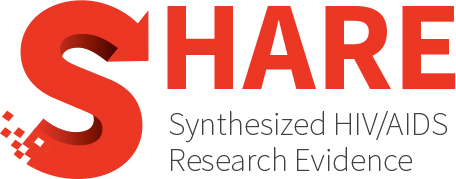Transitions in treatment: A systematic review and meta-aggregation of preferences and barriers in switching from oral to long-acting injectable antiretroviral therapy among people living with HIV and stakeholders
Abstract
INTRODUCTION: Antiretroviral treatment (ART) has significantly enhanced health outcomes for people living with HIV (PLWH). With the evolution of treatment options, there is an increasing interest in the development of long-acting injectable formulations of antiretroviral drugs. These formulations present a promising alternative to oral ART. METHODS: The methodology and reporting of this systematic review followed the guidance of the Joanna Briggs Institute Reviewer’s Manual and Enhancing Transparency in Reporting the Synthesis of Qualitative Research (ENTREQ). The comprehensive searches involved multiple databases, including PubMed, MEDLINE (Ovid), Embase (Ovid), CINHAL (EBSCO), ProQuest Dissertations and Theses, Web of Science, Wanfang (Chinese), CNKI (Chinese), Google Scholar and Baidu Scholar (Chinese). RESULTS: In all, 142 studies were identified and 20 eligible studies were included in the meta-aggregation. A total of 141 findings, 20 categories and nine synthesized findings were extracted from 20 studies. The nine synthesized findings identified from the 20 studies focused on the following topics: benefits, flexibility and practicality of long-acting injectable (LAI) treatment; scepticism about the use of LAI treatment; management challenges; logistical challenges; potential for protecting marginalized populations; concerns about side effects; financial issue; suggestions for improvement. PLWH’s geographical distribution, backgrounds, demographics and clinical characteristics were limited. CONCLUSION: We recommend considering the needs and experiences of PLWH in the transition from oral ART to LAI treatment. For marginalized populations, it is crucial to maintain regular communication with healthcare providers and institutions. Additionally, at the community level, engaging diverse stakeholders with valuable insights is vital, as is enhancing health education programmes and intensifying efforts to combat discrimination. These measures will play a key role in addressing the needs of PLWH, enhancing public awareness and promoting better understanding of LAI treatment.
Authors
Hu T, Yang S, Yu J, Yang Z, Jin Y, Zhu Z
Year
2025
Topics
- Epidemiology and Determinants of Health
- Determinants of Health
- Determinants of Health
- Income
- Education
- Health services
- Population(s)
- General HIV+ population
- Prevention, Engagement and Care Cascade
- Engagement and Care Cascade
- Engagement and Care Cascade
- Treatment
